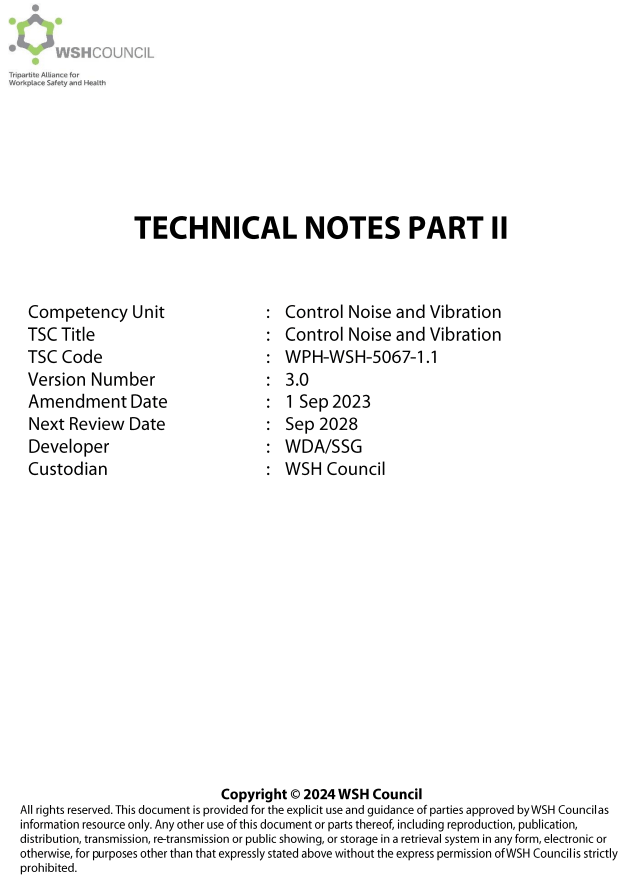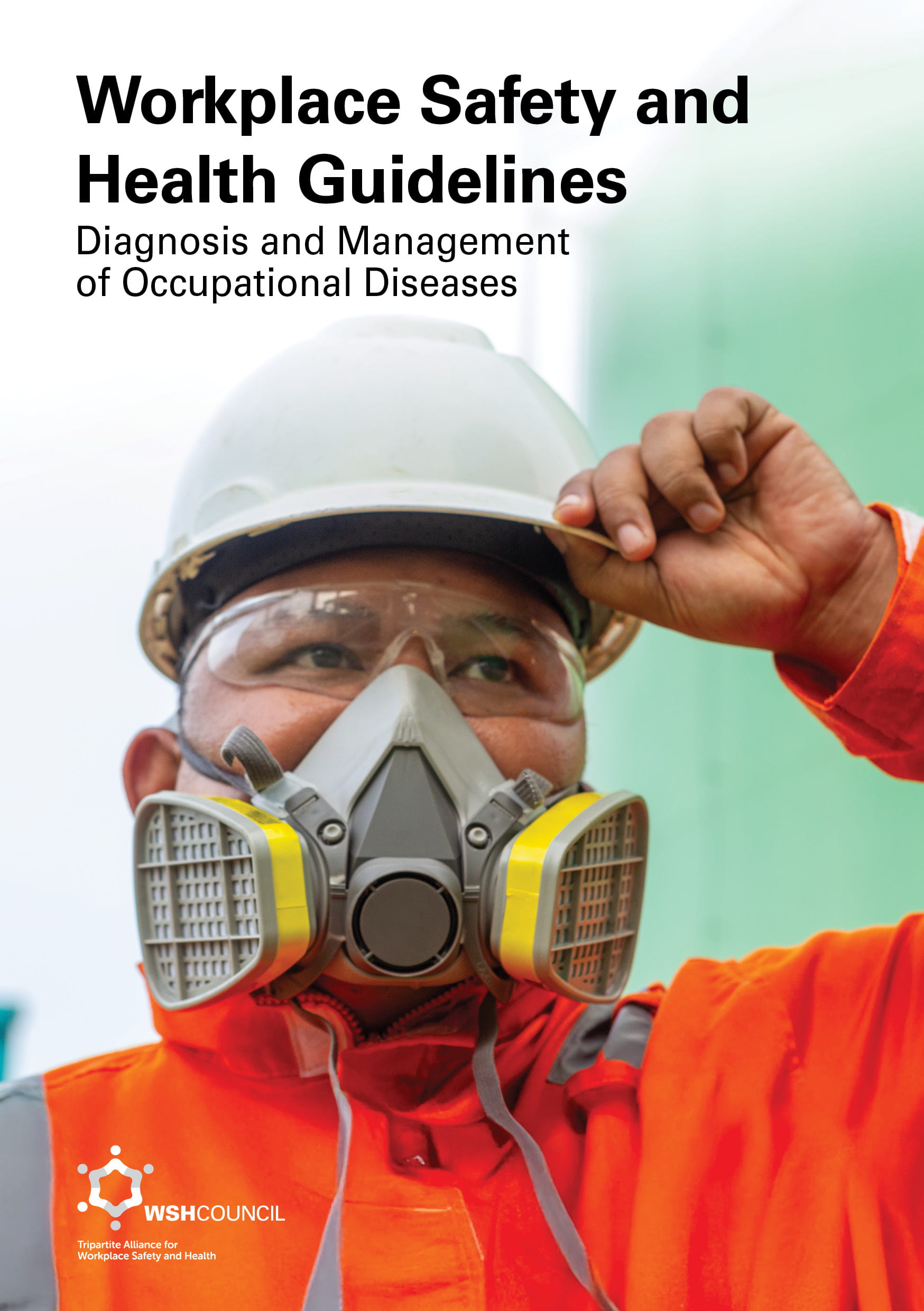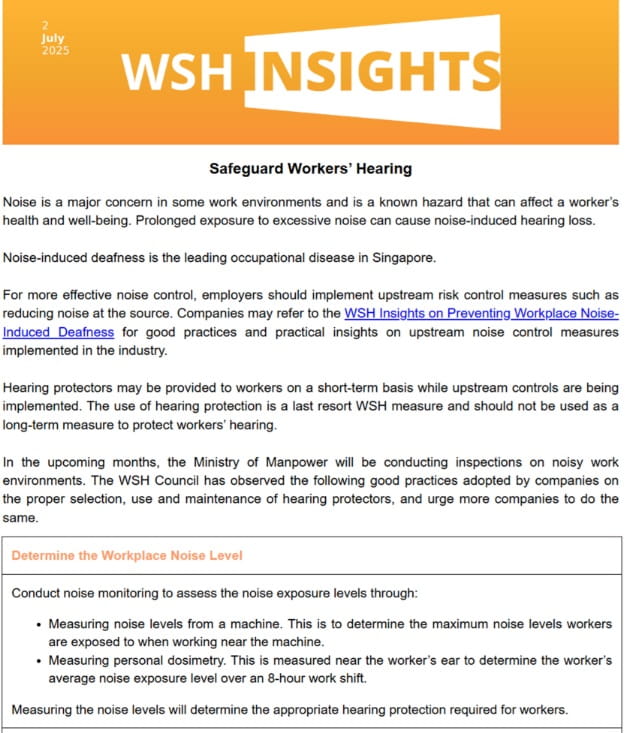Managing Noise Hazards
Learn how to manage noise hazards at the workplace.
Noise Hazards
Prolonged exposure to excessive noise can cause irreversible damage to the ears. Noise hazards at the workplace must be effectively managed to eliminate or minimise noise-related risks.
Noise Control Measures
Consider the following risk control measures to reduce noise issues at your workplace:
|
Principles of control |
Risk Control Measures |
|
At the noise source |
|
|
Along the noise path |
|
|
At the receiver |
|
Employer's Role
To protect employees from the adverse effects of excessive noise, you should:
- Conduct a risk assessment to identify workplace noise hazards and evaluate the risks.
- Seek advice on proper noise control measures (e.g. appoint a noise control officer).
- Implement a comprehensive Hearing Conservation Programme (HCP). Refer to the WSH Guidelines on Hearing Conservation Programme (PDF).
- Send affected employees for pre-employment and annual audiometric examinations.
- Provide suitable hearing protectors such as earplugs or earmuffs.
Employee's Role
You must:
- Observe warning signs on hearing protection.
- Wear proper hearing protectors.
- Report machine breakdown and identify the source of noise.
- Seek medical help if you experience hearing problems.
For More Information






